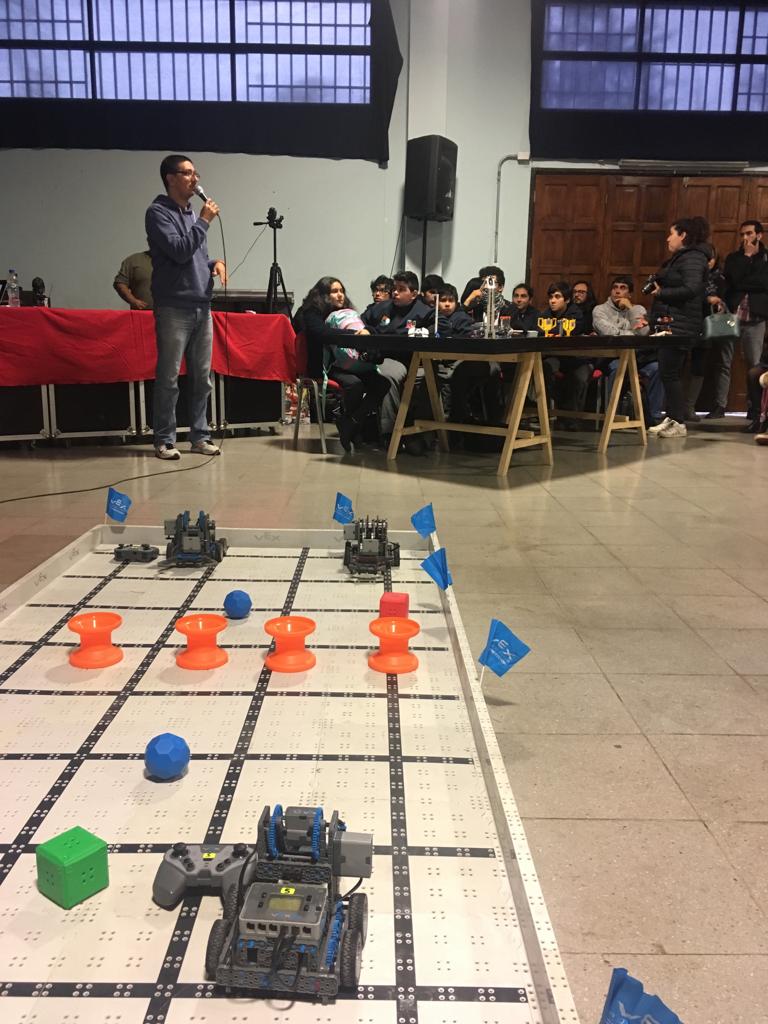Investigador Jorge Pérez aterriza la inteligencia artificial en charla para 320 estudiantes
“Vean a esas personas que están ahí. ¿Qué tienen en común? Lo que las une es que esas personas no existen, no son reales. Un computador, pixel a pixel, las dibujó. Parte de lo que les quiero contar hoy es cómo hace un computador, para crear esto. Les voy a enseñar que no es tan extraño y que ustedes pueden aprender a hacerlo”.
La introducción de Jorge Pérez, académico del Departamento de Ciencias de la Computación de la Universidad de Chile e investigador del Instituto Milenio Fundamentos de los Datos, sorprendió a buena parte de los estudiantes presentes. Poco tiempo después, ellos se sumaron al juego que el científico proponía, de identificar aquellas imágenes que fueron creadas mediante inteligencia artificial, versus las que correspondían a fotografías de personas reales. Así, algunos alumnos presentes en el auditorio del Colegio Consolidada Dávila, de la comuna Pedro Aguirre Cerda, interactuaron con Jorge Pérez, levantando la mano, riéndose o comentando con sus compañeros.

“Redes Neuronales Artificiales… y cómo pueden los computadores hacer sentido del mundo humano”, fue el título de la presentación que realizó el 29 de mayo, como parte del Programa Congreso Futuro en tu Comuna, enfocada en aplicaciones y ejemplos concretos: música de piano en vivo -mediante un programa creado con inteligencia artificial, donde se puede seguir el movimiento de los dedos de grandes compositores-; videos de baile en los que un computador reconoce e imita, mediante IA, los movimientos de humanos y los traspasa a videos de otras personas; y ejercicios para graficar cómo alimentar a una red neuronal en tareas específicas, entre otros.
“¿Cómo podemos hacer para entrenar una red neuronal artificial?, preguntó Jorge Pérez, a la vez que exhibió una estructura que se iba “alimentando” de datos. “Repetimos miles de veces el proceso de mostrarle ejemplos a la red y al finalizar este, tenemos una red entrenada”, precisó, luego de presentar dos diagramas distintos de redes neuronales, una entrenada y otra no.
La clase del científico duró cerca de 40 minutos, bajo un formato atípico, de discusión, más que de una charla tradicional. Y se desarrolló ante una gran audiencia: 320 estudiantes, provenientes de tres liceos de esa comuna: Colegio Consolidada Dávila, Liceo Municipal Enrique Backausse y Liceo Eugenio Pereira Salas.
Para graficar el alcance de las redes neuronales, el investigador mostró ejemplos de cómo el computador puede crear su propio animé, proporcionándole datos como color de pelo, o de ojos. También se detuvo en ejemplos de textos, que una lA iba completando. “Si la red aprendió cómo es un texto, es capaz de completar una oración. Lo peligroso es que pueda ser entrenada para hacer fake news. Con este tipo de cosas hay que tener cuidado y es importante aprender cuándo la información es real o no”, advirtió.
En la misma línea de aterrizar la IA, Jorge Pérez mostró cómo una red neuronal artificial puede aprender a completar partituras de Mozart o de un grupo musical favorito. Para ello, utilizó, en vivo, una aplicación donde él iba tocando un piano no real -compuesto de solo ocho teclas-, que sonaba como una composición musical real, gracias a un programa entrenado para hacer música.

Al final de su clase, alumnos de un curso de robótica hicieron preguntas como, por ejemplo, si una red neuronal puede entrenar a otra, o si hay riesgos de que una red se equivoque en sus decisiones, luego del entrenamiento. También se sumó un profesor presente, quien le preguntó sobre la relevancia de enseñar programación en colegios y los desafíos que esto implica para los educadores.
“Es importante que los profesores que están formando a los alumnos entiendan que su rol es pasar a ser más un guía, que el que entrega el conocimiento. Y no es necesario que sepan más, de programación o de lo que sea, que sus estudiantes”, aseguró Jorge Pérez, quien es uno de los fundadores de la Olimpiada Chilena de Informática, que cuenta con el apoyo del Programa de Extensión al Medio de Iniciativa Científica Milenio.
Revisa la presentación de Jorge en este link: bit.ly/2YW87jU
